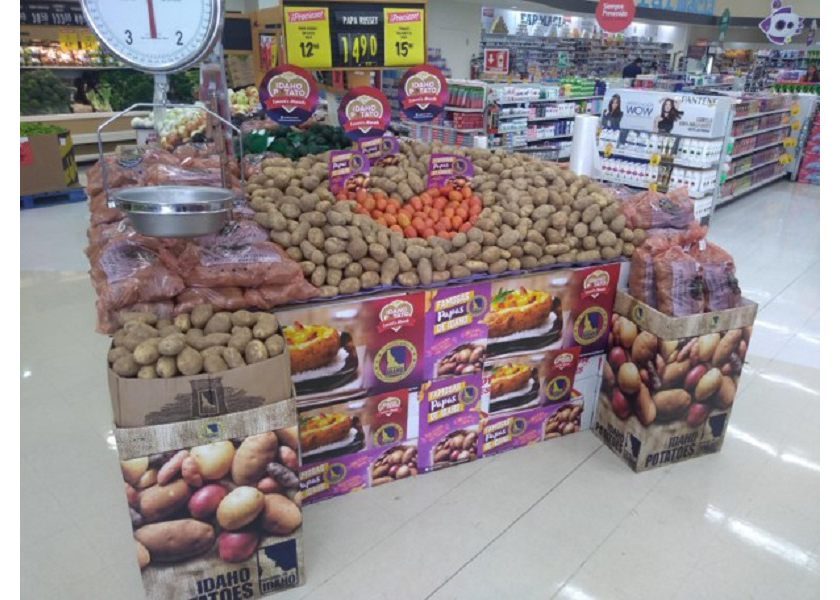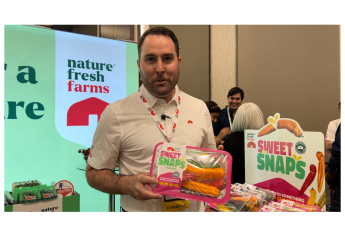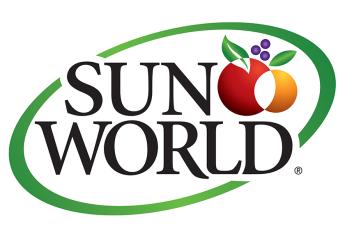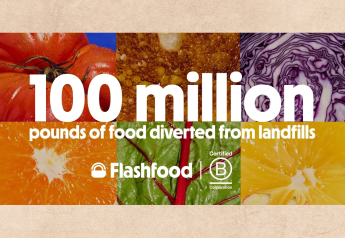Mexico market potential is great, industry leaders say

Export opportunities for U.S. fresh potatoes into Mexico are set to expand significantly within the next few months, U.S. potato industry leaders believe.
Mexico’s National Service for Agricultural Health, Food Safety, and AgriQuality (SENASICA) on Nov. 6 published the phytosanitary Requirement Sheet for U.S. potato imports to the entirety of Mexico. That is a substantial change from the past 20 years, when U.S. fresh produce exports to Mexico, have been and continue to be, limited to the region within 26 kilometers of the U.S. border.
Kam Quarles, CEO of the National Potato Council, said the expectations are that U.S. fresh potato shipments to all of Mexico will start within a few months.
“Finally getting a 25-year trade dispute behind us would be a very good thing,” Quarles said, noting that the long-sought outcome justifies the time and attention the U.S industry has invested in winning access.
U.S. potato exports could be lifted by up to 15% annually with the complete opening of the Mexican market, Quarles said.
Quarles said in late November that the next step in the approval process will be site visits by Mexican agricultural officials to U.S. production areas. Soon, Mexico will also register exporters in the U.S. who want access to the Mexican market.
An NPC educational campaign will aim to make sure that all involved in exporting to Mexico will follow the rules to the letter, Quarles said.
After 25 years of waiting for full access to Mexico, the industry won’t be celebrating market access prematurely, said John Toaspern, vice president of international marketing for Potatoes USA said the
“We don’t’ want to believe anything until it actually happens, and it has been happening for six months because we have been down this road for too many times.”
When that time comes, Toaspern said U.S. potato exporters will be able to build volume into Mexico.
“It will start slow, but as it grows, as relationships get developed and as consumers there make the adjustment and (U.S. potatoes) find broader applications within the foodservice industry, it could get to be a $300 million market each year,” Toaspern said. Current U.S potato exports to Mexico total about $70 million; in five years that could approach $300 million, he said. “That will have a significant impact on the industry.”
Mexico’s population and average income have been rising, but Mexico’s potato output has been declining for 20 years, he said. “It is a very obvious situation where the market is being shorted,” Toaspern said.
Expanded U.S. export opportunities represent an opportunity to help Mexican consumers have access to a healthy, nutritious and affordable staple, while still preserving demand for Mexican potatoes, he said.
Barring any further legal hurdles, Toaspern said that the process for actually shipping U.S. fresh potatoes to Mexico will unfold in a process that could take from many weeks to a few months.
“We don’t want anything to be rushed that can be challenged later; we want to have all boxes checked off properly, and then we (will) have permanent access,” Toaspern said.
Another export market with the potential to grow this year, Toaspern said, is Japan. While winning fresh market access is a longer-term goal, he said a shorter crop in Japan is expected to result in greater demand for U.S. chipping potatoes.
“We have already seen pretty good increases in this fall, which is our lighter time,” he said. “We usually ship more in the spring when their crop is running out,” he said. Japanese demand for U.S frozen potatoes is strong, but a shortage of containers and logistical problems of moving product to Asia has slowed shipments.
In addition, finding trucks and truck drivers to move product to West Coast ports is another chore.
“A lot of fries go through Washington state, but even there they have got problems,” he said, adding that costs of shipping ocean freight have increased astronomically compared with a year ago.







